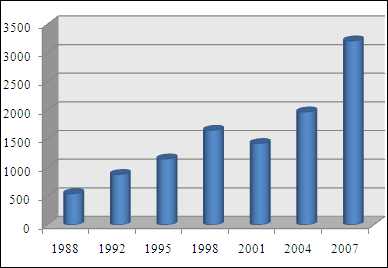
The WikiLeaks website crashed Tuesday in an apparent cyberattack after the accelerated publication of tens of thousands of once-secret State Department cables by the anti-secrecy organization raised new concerns about the exposure of confidential U.S. embassy sources.
"WikiLeaks.org is presently under attack," the group said on Twitter late Tuesday. One hour later, the site and the cables posted there were inaccessible.
WikiLeaks updated its Twitter account to say that it was "still under a cyberattack" and directed followers to search for cables on a mirror site or a separate search system, cablegatesearch.net.
The apparent cyberattack comes after current and former American officials said the recently released cables — and concerns over the protection of sources — are creating a fresh source of diplomatic setbacks and embarrassment for the Obama administration. It was not immediately clear who was behind the attack.
The Associated Press reviewed more than 2,000 of the cables recently released by WikiLeaks. They contained the identities of more than 90 sources who had sought protection and whose names the cable authors had asked to protect.
Officials said the disclosure in the past week of more than 125,000 sensitive documents by WikiLeaks, far more than it had earlier published, further endangered informants and jeopardized U.S. foreign policy goals. The officials would not comment on the authenticity of the leaked documents but said the rate and method of the new releases, including about 50,000 in one day alone, presented new complications.
"The United States strongly condemns any illegal disclosure of classified information," State Department spokeswoman Victoria Nuland said. "In addition to damaging our diplomatic efforts, it puts individuals' security at risk, threatens our national security and undermines our effort to work with countries to solve shared problems. We remain concerned about these illegal disclosures and about concerns and risks to individuals.
"We continue to carefully monitor what becomes public and to take steps to mitigate the damage to national security and to assist those who may be harmed by these illegal disclosures to the extent that we can," she told reporters.
Neither Nuland nor other current officials would comment on specific information contained in the compromised documents or speculate as to whether any harm caused by the new releases would exceed that caused by the first series of leaks, which began in November and sent the administration into a damage-control frenzy.
WikiLeaks fired back at the criticism even as its website came under cyberattack.
"Dear governments, if you don't want your filth exposed, then stop acting like pigs. Simple," the group posted on Twitter.
Some officials noted that the first releases had been vetted by media organizations who scrubbed them to remove the names of contacts that could be endangered. The latest documents have not been vetted in the same way.
"It's picking at an existing wound. There is the potential for further injury," said P.J. Crowley, the former assistant secretary of state for public affairs who resigned this year after criticizing the military's treatment of the man suspected of leaking the cables to WikiLeaks. "It does have the potential to create further risk for those individuals who have talked to U.S. diplomats. It has the potential to hurt our diplomatic efforts and it once again puts careers at risk."
Crowley set up a crisis management team at the State Department to deal with the matter and said officials at the time went through the entire collection of documents they believed had been leaked and warned as many named sources as possible, particularly in authoritarian countries, that their identities could be revealed. A handful of them were relocated, but Crowley said others may have been missed and some could not be contacted because the effort would have increased the potential for exposure.
The new releases "could be used to intimidate activists in some of these autocratic countries," he said. He said he believed that "any autocratic security service worth its salt" probably already would have the complete unredacted archive of cables but added that the new WikiLeaks releases meant that any intelligence agency that did not "will have it in short order."
WikiLeaks insisted it was "totally false" that any WikiLeaks sources have been exposed and appeared to suggest the group itself was not even responsible for releasing unredacted cables.
The group seemed to taunt U.S. officials and detractors in yet another Twitter message late Tuesday, asking what they will do "when it is revealed which mainstream news organization disclosed all 251k unredacted cables."
The AP review included all cables classified as "confidential" or "secret," among the more than 50,000 recently released by WikiLeaks. In them, the AP found the names of at least 94 sources whose identities the cable authors asked higher-ups to "protect" or "strictly protect." Several thousand other of the recently published cables were not classified and did not appear to put sources in jeopardy.
The accelerated flood of publishing partly reflects the collapse of the unusual relationships between WikiLeaks and news organizations that previously were cooperating with it in exchange for being given copies of all the uncensored State Department messages.
Initially, WikiLeaks released only a trickle of documents at a time from a trove of a quarter-million, and only after considering advice from five news organizations with which it chose to share all of the material. The news organizations advised WikiLeaks on which documents to release publicly and what redactions to make to those documents. The Associated Press was not among those news organizations.
In recent months, those relationships have soured noticeably. WikiLeaks complained Tuesday that a reporter who wrote about the group's efforts for The New York Times, one of the news organizations it was working with closely, was a "sleazy hack job." It also said a reporter for Guardian in Britain, another of its former partners in the release of documents, had exhibited a "tawdry vendetta" against WikiLeaks






















































